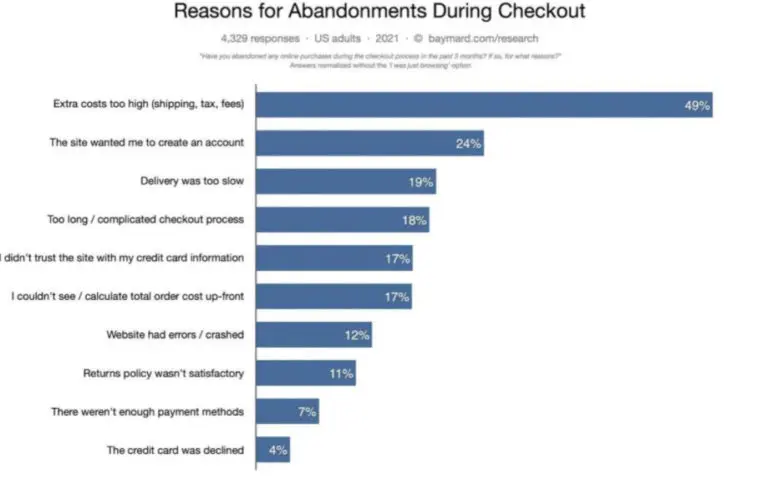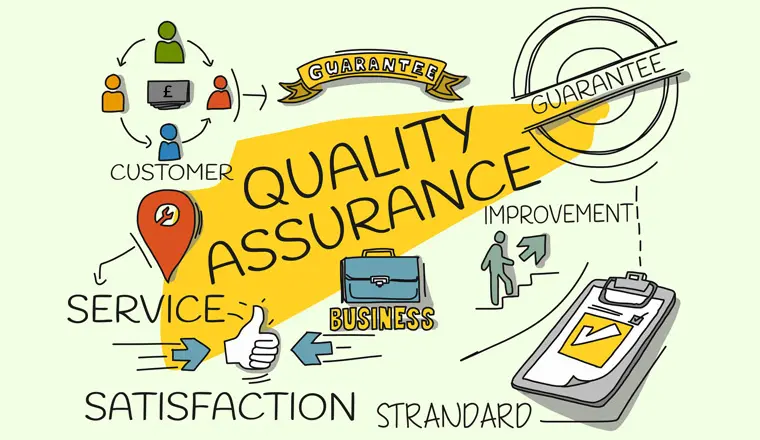Retail e-commerce sales worldwide is forecasted to reach a projected value of 6.5 trillion U.S. Dollars in upcoming years, but did you know, at the same time, more than 12% of online shoppers abandon their e-commerce carts due to the poor performance of the website or app.

To encash the whooping opportunities in the e-commerce sector, customer experience/customer delight should always be a priority. The websites/mobile apps are the new showrooms, headquarters, and sales offices. Hence, “Quality Assurance” of websites and apps is the vital step towards e-commerce business development.
From a technical point of view, an e-commerce website is considered successful if all of its features work properly under all conditions, which is why you must run a series of tests before officially launching your e-commerce website.
Quality assurance is one element that ensures a system’s excellent performance, functionality, and usability. It prevents defects and delivers superior products to clients based on their needs in e-commerce.
Let’s see how quality assurance can make a difference to your e-commerce business

- Helps to build a stronger reputation: QA investigates mistakes made that hampered the growth of the company.
- Ensures customer satisfaction: the market has highly intelligent customers and it ensures they’re getting the best user experience.
- Provides smooth compatibility between various devices: In the USA, mobile commerce is expected to account for more than ten percent of all retail sales by 2025. e-commerce websites that focus on developing websites for mobile devices gain a competitive advantage in the industry.
Before we jump into how quality assurance helps to solve e-commerce problems, let’s first understand:
The challenges faced by eCommerce websites.
1) Cyber & Data Security
Make sure your eCommerce website is safe with HTTPS (HyperText Transfer Protocol Secure), especially because users feed their personal information while placing orders like credit card details, phone numbers, etc. In addition to that, you must also always have a backup for your data, in case of any major technical issues.
A solution for that can be downloading plugins that prevent your website from getting hacked.
2) Compatibility Issues Across Browsers
To run a successful eCommerce website you need to study your audience and set your choice of server accordingly. The website load speed is highly important for its success, and it can be hampered across different browsers because of unexpected glitches.
To prevent your website from such issues make sure it is compatible with the browsers that are being used by your users, make use of Google Analytics and find out about the different browsers.
3) UI/UX Issues

We live in a fast-paced world nowadays, and everything is shifting from desktops to mobile devices. And as an e-commerce website owner, you must focus on building mobile-friendly websites as well.
When building mobile-friendly websites you need to be careful about the UI/UX design that goes into building them, make sure you pay attention to important elements such as fitting valuable content on small screens, creating large tappable areas, etc.
4) Site Speed
The probability of a user bouncing off a mobile webpage increases by 32 percent when the page takes between one and three seconds to load (compared to pages that load in under one second). No customer would come back to a site if its loading speed is low, it can easily cause major revenue & client losses for the company. Identify the issues affecting your page speed, and find ways to fix them.
Make use of Page Speed Insights and keep a constant check on your website and what other factors are affecting its speed.
E-commerce websites or applications are web applications or mobile applications, hence they go through different approaches to find out if there are any bugs in the website/application that could affect the quality of the website, such as:
- Introduce Alpha Beta Testing And A/B Testing
- Change Your Test Cases
- Exploratory Testing
- UAT & QA Audit Your Site
- Use tracking tools to record the user experience on your website
How Can Quality Assurance Reduce These Issues?
- Architecture mapping and detailed documentation: Running tests in the initial stages of the website development can help identify and reduce the issues after production, saving time and money.
- Use of real case scenarios: To understand how well your website is performing, use real case scenarios, test the website, and cut down user acceptance testing during the later stages.
- Full QA implementation with the Agile SCRUM teams: Implement SCRUM framework to manage product development, it also aids in improving the productivity level of the website which helps online stores to get accustomed to the dynamic market environment.
- Surveillance test development to monitor the live site: Run free surveillance on your website using Google Analytics, it will help you gather real-world data that will further assist you in testing your website.Make sure to check for a sudden drop in transactions, the browsers and operating systems your users use, etc.
- Defect reporting and regression testing process implementation: When performing regression testing on your website, you must create RTM (requirement traceability matrix) sheet, map requirements, prepare test scenarios, & prioritize test cases.
Smoke testing is another equally important element, that reveals simple failures big enough to stop a website from functioning properly.
Certain pages that need to be verified in smoke testing are:
- Home page testing opportunities
- Category and navigation repetition
- Product page issues
- Shopping cart and checkout page
- Browser testing
- Match the development environment
- After order functionalities
- Mobile/responsive design QA
In conclusion, we would recommend preparing a quality assurance checklist for your website before officially launching it in the market: third-party API integrations like tracking, shipping, importing/exporting products/orders data into ERP.
Want to build a bug-free e-commerce website and mobile application? We are here to help you out!


